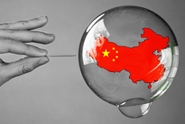Government/Policy

May 6, 2018
May 6 Trade Update: U.S. Trade Negotiations with China
Written by Lewis Leibowitz
Trade attorney Lewis Leibowitz has been gracious in offering our readers his take on trade issues on almost a daily basis. With the wide variety of trade issues confronting U.S. companies it is very difficult to stay on top of those that might affect your company, either today (such as Section 232 tariffs, AD/CVD duties) or in the future (NAFTA negotiations, Chinese negotiations and more). Here is what Leibowitz shared with us this afternoon:
Last week seven senior trade officials went to China to “negotiate” on trade issues. The agenda was ambitious—some might say too ambitious to expect progress on any issue.
During the week, a draft discussion paper prepared by the US side was leaked. The paper was entitled “balancing the trade relationship between the United States and the People’s Republic of China.” I saw this paper in an online trade newsletter; but I don’t know who leaked it or why. Often, controversial documents are leaked by skeptics or dissenters; this may be the case here (or perhaps not).
One of the major issues for discussion in the paper is the reduction of the US trade deficit with China. The paper stated as a concrete goal the reduction of the bilateral trade deficit by $100 billion (annual rate) by June 2019, and another $100 billion by June 2020.
![]() Other topics include intellectual property rights, restricting Chinese investment in “sensitive technologies” in the United States, relaxing restrictions on US investment in China, reducing barriers to agricultural exports from the US, and improving the climate for services and service suppliers in China. A pretty one-sided agenda.
Other topics include intellectual property rights, restricting Chinese investment in “sensitive technologies” in the United States, relaxing restrictions on US investment in China, reducing barriers to agricultural exports from the US, and improving the climate for services and service suppliers in China. A pretty one-sided agenda.
China issued a press release on Friday saying that “major differences” persisted after the meetings last week. No surprise there.
Let’s take the first agenda item—reducing the US trade deficit with China. Assuming that the Administration takes this issue very seriously (and that is a safe assumption), how would we go about reducing the trade deficit by $200 billion in 2 years (actually, the reduction could take until the end of 2020, so it’s a bit more than 2 years)?
- If the Chinese were to agree to this goal, they could cooperate by restricting exports to the United States. In 2017, China exported a bit over $500 billion in goods to the United States. A paragraph in the paper seems to hold China to increase imports from the US by $75 billion in 2018-19 and another $50 billion in 2019-20. China could compel (or strongly encourage) consumers to increase purchases by that amount. Presumably, if they did they would reduce purchases from the rest of the world by an equivalent amount.
- The rest of the trade deficit reduction would be through reduced US imports from China–$25 billion less in 2018-19 and $50 billion less in 2019-20. Could we impose tariffs or quotas sufficient to reduce imports by that amount? In theory we could, but what would be the effect? It could be that imports from the rest of the world would increase by an equivalent amount.
Let’s further suppose that the Administration wants to reduce the global trade deficit by $200 billion by 2020. If China is responsible for 100% of that, then imports from other countries would need to be held steady. How would we do that? Again, we could impose tariffs or quotas, such as those we’ve just imposed on steel and aluminum; but enforcing them would be extremely burdensome—some might object to them, because they may believe that the nation’s security is not really at stake here.
These strategies were tried once before—in the 1770s by Great Britain. How well did that work out?
Lewis Leibowitz
The Law Office of Lewis E. Leibowitz
1400 16th Street, N.W.
Suite 350
Washington, D.C. 20036
Phone: (202) 776-1142
Fax: (202) 861-2924
Cell: (202) 250-1551






